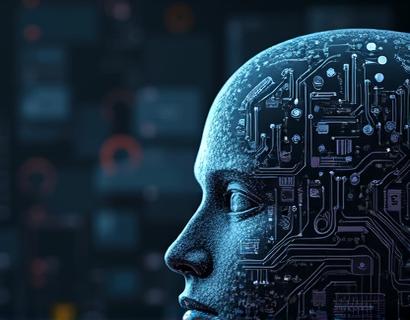UX Design Trends 2025: Mastering Digital Transformation with Expert Strategies and Insights for Enhanced User Experience
In the rapidly evolving landscape of digital products and services, UX design plays a pivotal role in driving success and user satisfaction. As we step into 2025, the field of UX design continues to evolve, influenced by technological advancements, changing user behaviors, and emerging design trends. This comprehensive guide aims to equip UX designers and enthusiasts with the latest expert strategies and insights to master digital transformation and enhance user experience.
Understanding the Current UX Design Landscape
The UX design landscape in 2025 is characterized by a focus on inclusivity, sustainability, and advanced technologies. Inclusivity in design ensures that digital products are accessible and usable by a diverse range of users, including those with disabilities. This trend is driven by legal requirements and a growing awareness of the importance of equitable design. Designers are incorporating features such as screen reader compatibility, adjustable text sizes, and color contrast adjustments to make their products more accessible.
Sustainability is another key trend shaping UX design. As environmental concerns become more pressing, there is a growing demand for digital products that minimize their ecological footprint. UX designers are exploring ways to reduce the carbon impact of digital services, such as optimizing load times to decrease energy consumption and designing for longevity to reduce the need for frequent updates and replacements.
Advanced technologies like artificial intelligence (AI), augmented reality (AR), and virtual reality (VR) are increasingly integrated into UX design. AI enhances user interactions through personalized experiences, predictive analytics, and intelligent assistants. AR and VR offer immersive experiences that can transform how users engage with digital content, from education to entertainment.
Key UX Design Trends for 2025
One of the most significant trends in UX design for 2025 is the emphasis on personalization. With the vast amount of data available, designers can create highly tailored experiences that resonate with individual users. Personalization goes beyond simple content customization; it involves understanding user behavior, preferences, and context to deliver relevant and timely interactions. Techniques such as machine learning algorithms and user segmentation are crucial in achieving effective personalization.
Another trend is the rise of voice user interfaces (VUIs). As smart speakers and voice-activated devices become more prevalent, UX designers must adapt to create seamless and intuitive voice experiences. This involves designing conversational flows that are natural, error-tolerant, and context-aware. The challenge lies in ensuring that voice interactions feel as natural and efficient as possible, mimicking human conversation as closely as technology allows.
Micro-interactions are also gaining traction in UX design. These small, subtle animations and feedback mechanisms enhance the user experience by providing immediate and satisfying responses to user actions. Micro-interactions can range from a loading spinner to a confirmation pop-up, and they play a crucial role in making digital products feel more responsive and engaging. Designers are encouraged to use micro-interactions thoughtfully to avoid overwhelming users with too much visual or interactive clutter.
The dark mode trend continues to grow in popularity, driven by user preference for reduced eye strain and a more modern aesthetic. Implementing dark mode not only improves visual comfort but also has environmental benefits by reducing screen brightness and power consumption. UX designers should ensure that dark mode is fully functional and aesthetically consistent across all aspects of the product.
Privacy and trust are becoming central to UX design. With increasing concerns over data privacy and security, users are more cautious about sharing their information. Designers must prioritize transparency and control, providing clear explanations of data usage and offering users easy ways to manage their privacy settings. Building trust through ethical design practices is essential for long-term user loyalty and satisfaction.
Strategies for Implementing UX Trends
To effectively implement these trends, UX designers need to adopt a user-centered approach that combines research, testing, and iterative design. Here are some expert strategies to consider:
First, conduct thorough user research to gain deep insights into your target audience. This involves methods such as user interviews, surveys, and usability testing. Understanding user needs, behaviors, and pain points is crucial for creating designs that truly resonate with your audience. Personas and user journey maps can help visualize and prioritize user needs throughout the design process.
Second, embrace agile methodologies to facilitate rapid iteration and continuous improvement. Agile frameworks allow designers to work closely with developers and stakeholders, ensuring that design changes can be implemented quickly and efficiently. This approach helps in responding to user feedback and market changes in real-time, keeping the product relevant and user-friendly.
Third, utilize design systems to maintain consistency and efficiency across digital products. A well-defined design system includes reusable components, style guides, and design tokens that ensure a cohesive user experience. Design systems reduce the time and effort required to create new features and maintain existing ones, allowing designers to focus on innovation and enhancement.
Fourth, leverage AI and machine learning to enhance personalization and automation. By integrating AI tools into the design process, designers can analyze user data to identify patterns and preferences, informing design decisions and optimizing user experiences. AI can also automate routine tasks, freeing up designers to focus on more creative and strategic work.
Lastly, prioritize accessibility in every stage of the design process. Accessibility is not just a compliance issue but a fundamental aspect of inclusive design. Use tools and guidelines such as the Web Content Accessibility Guidelines (WCAG) to ensure that digital products are usable by everyone, regardless of ability. Regular accessibility audits and user testing with diverse participants can help identify and address potential barriers.
Tools and Resources for UX Designers
To stay ahead in the field of UX design, designers need access to the right tools and resources. Here are some essential tools and platforms that can aid in the design process:
Figma and Sketch are leading design tools that offer collaborative features and a wide range of plugins to enhance functionality. These tools support real-time collaboration, making it easier for teams to work together seamlessly.
InVision provides comprehensive solutions for prototyping, testing, and managing design assets. Its features include interactive prototypes, user feedback tools, and integration with other design and development tools.
Google Analytics and Hotjar are valuable for understanding user behavior and optimizing digital products. Google Analytics offers detailed insights into user interactions and conversion paths, while Hotjar provides heatmaps and session recordings to visualize how users engage with the site.
UserTesting and TryMyUI facilitate remote usability testing, allowing designers to observe real users interacting with their products. These platforms provide valuable feedback and help identify areas for improvement.
For staying updated on the latest trends and best practices, UX Collective, Smashing Magazine, and A List Apart are excellent resources. These platforms publish in-depth articles, case studies, and interviews with industry experts, offering a wealth of knowledge to inform and inspire UX designers.
Conclusion
As we navigate the complexities of digital transformation, UX design remains a critical factor in the success of digital products and services. By embracing the latest trends and implementing expert strategies, UX designers can create experiences that are not only functional and efficient but also enjoyable and meaningful. The key to mastering digital transformation lies in a deep understanding of user needs, a commitment to inclusivity and sustainability, and the willingness to adopt innovative technologies and practices. With the right approach and tools, UX designers can drive digital success and enhance user satisfaction in the years to come.











































